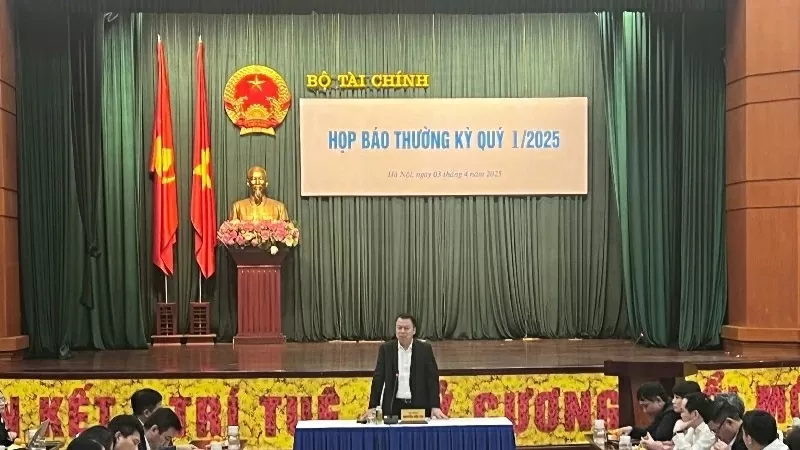
How is Vietnam responding to the U.S.'s 'reciprocal' tariffs?
Latest
 |
| How is Vietnam responding to the U.S.'s 'reciprocal' tariffs: Deputy Finance Minister Nguyen Duc Chi speaks at the press conference. (Photo: Nhan dan Newspaper) |
At the press conference, the issue of the U.S. imposing a 46% countervailing duty on certain goods imported from Vietnam to the United States received a lot of attention from the media.
The Deputy Minister noted that this tariff rate is much higher than the current tariff rate for Vietnamese goods exported to the United States. This will significantly affect many production sectors in Vietnam, especially industries and sectors with a large export turnover to the U.S., such as electronics components, forestry, textiles, and leather shoes, he went on.
"Most U.S. goods exported to Vietnam are subject to an import tariff rate of 15% or lower. This means that our tariff rates are much lower compared to the tariff rates the U.S. applies to Vietnam", he underscored.
The Deputy Minister said the Government leadership and relevant agencies are making efforts to clarify the reasons behind the U.S.'s 46% countervailing duty and to seek solutions toward achieving a balanced trade outcome beneficial to both sides.
Deputy Minister Chi reaffirmed Vietnam's proactive stance and expressed the desire to achieve a better trade balance in the future, ensuring cooperative development and benefits to businesses and consumers in both countries."Vietnam will persist in discussions with its U.S. trade partner to find solutions aimed at achieving trade balance, increasing turnover without raising tariffs, so that consumers in both countries can benefit from the development of trade between the two nations".
"This weekend, the Government will send a senior official along with a delegation to the U.S., including discussions on directly addressing the tariff issue. It is hoped that with this exchange of information, the U.S. will listen and take appropriate steps." emphasized the Deputy Minister of Finance.
From April 9, higher “reciprocal” tariffs will officially be imposed on more than 60 countries that the U.S calls "causing trade imbalances". Some businesses have expressed great concern over the current situation, though they still hold a glimmer of hope for possible negotiations, as the 46% tariff would undoubtedly create significant challenges for Vietnamese enterprises.
Mr. Truong Ba Tuan, Deputy Director of the Tax Policy Department at the Ministry of Finance, shared that, in recent times, the Ministry has proactively reviewed trade relations with partners to advise the Government. This includes the Government's recent issuance of Decree No. 73/2025/ND-CP on March 31, 2025, which amends and supplements the preferential import tax rates for several items in the Preferential Import Tariff, as outlined in the List of Taxable Items issued with Decree No. 26/2023/ND-CP on May 31, 2023, regarding the Export Tariff, Preferential Import Tariff, and List of Goods with absolute tax rates, mixed tax, and import tax outside tariff quotas.
While drafting Decree No. 73/2025/ND-CP to amend and supplement preferential import tax rates, Vietnam conducted a comprehensive review and carefully calculated adjustments to ensure appropriate tax rates for different product categories from key partners. Deputy Director Tuan emphasized the active efforts to find balance points and improve the trade balance with major partners.




















